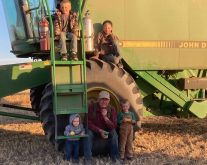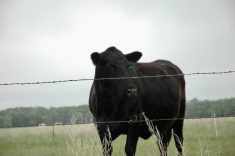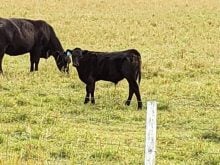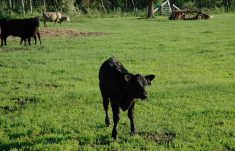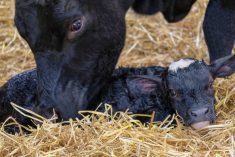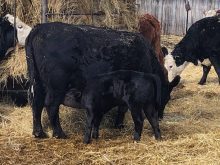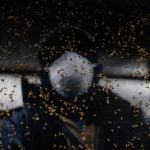With improved breeding practices nowadays, calving season is more about mothering up, colostrum consumption and keeping calves warm and dry. Cases of calving difficulty have been greatly reduced.
However, the backwards calf is still the most common calving malpresentation that require some intervention. With the alignment of the calf and the way the feet are pointing, cows have difficulty bringing the calf up and over the pelvic brim. These visual clues are perhaps a good thing, because if the birthing process is delayed even a little bit, you can have a calf that suffocates inside the cow. Producers need to be very observant to watch for the hooves upside down and the dewclaws pointing skyward, so they know to intervene.
Read Also
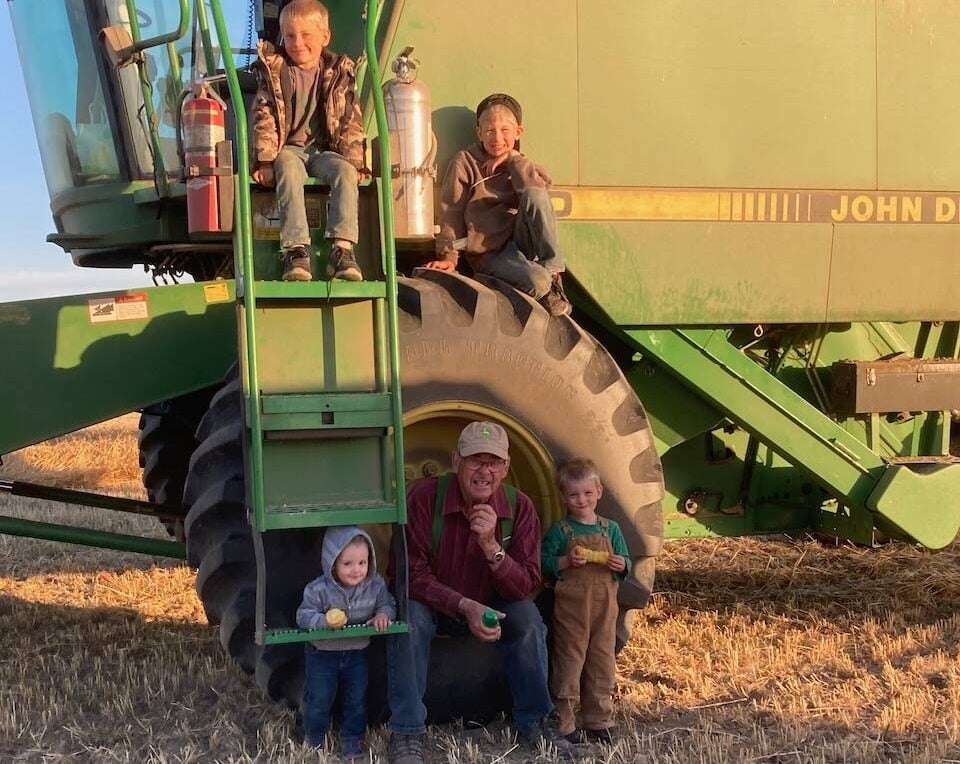
Harvest wraps up and fall work begins
At the Eppich famly ranch in western Saskatchewan, the fall harvest was successful with few breakdowns, cows and calves have been sorted and a new tractor has arrived
For straight backwards calf presentations, most can be pulled by hand but if a little snug I like to have a puller handy. I always double-chain and initially I usually pull straight back. It is almost the opposite approach of how we pull a properly positioned forwards calf. While pulling straight back, make sure to get the hips of the calf engaged into the pelvis of the cow. Also reach in, find the calf’s tail and stick it down between its legs. You don’t want it flipping up, making the extraction more difficult, and there is always the possibility it could lacerate the pelvis of the cow.
Most backwards calves come pretty easily. I have always said whatever weight of calf a cow can deliver frontwards, the weight of the backwards calf is probably about 10 pounds less.
Check for twins
With a backwards calf there is always the possibility of twins, so at the outset of assistance check for the possibility. In my experience, about two-thirds of backwards calves cases are twins. And in some situations both calves present backwards. About half the time it is one backwards and one forwards. The backwards calf may even be presented full breech (tail first.)
If pulling a backwards calf, make sure the back legs are coming out evenly. If it is a case of twins you don’t want to be pulling on two calves at the same time. With twins, the arrangement of calves may be very mixed up but can almost always be sorted out so you can determine which calf to pull out first. With twins, the top calf must always be extricated first. There is no room to bring the bottom calf by the first calf.
When pulling the calf, once you snug the chains up to the hocks make sure the tail is down and there is enough room. The tight point will come just when the calf’s big butt end slides up into the pelvis. Allow the cow to really strain with pressure, and all of a sudden you will get a quick gain of five or six centimetres. That means the calf has engaged and should be able to be delivered.
If pulling against what seems like a brick wall then a C-section may be necessary but that is rare with today’s cattle breeds.
In pulling the backwards calf, the navel cord does not break until just after the tail head is presented. I am very slow and methodical when pulling backwards calves, readjusting and letting the cow push until we get just past the tail head of the calf. Then I jack the puller quite quickly.
Fortunately the front end of the calf should come out quite easily. If the calf all of a sudden starts kicking quite violently, the navel cord has either been broken or pinched off and the calf is attempting to breathe inside the cow. You must get it out quickly and be ready for resuscitation by wiping the fluid from its mouth and nostrils.
Remember that backwards calves are sometimes delayed in coming. I believe the back legs pushing up against the top of the pelvis causes a delayed response in calving. Because of the pressure put on the back end these calves are often meconium stained (calf’s first stool) as well. The other thing that happens is often the navel cord will break off short. This is a known phenomenon and just as with C-sections, unless we stop the calf and break off the umbilical shroud long, the calf is essentially born backwards out of the incision and the umbilicus breaks off short.
The percentage of cows having backwards calves varies from year to year and of course is higher when your twinning percentage in the herd is higher. Backwards calves take a bit more work as almost all need assistance but by careful checking, spotting them early and monitoring for navel infections (because of ripped-off short navel) most will add to the productivity of your calf crop. Remember when assisting in the delivery of a backwards calf, always check for a second one.



